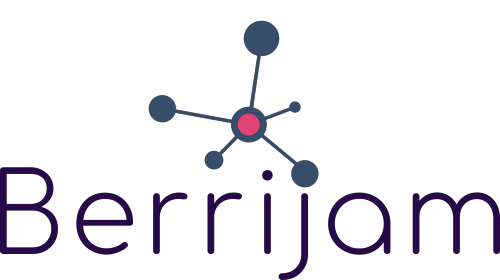Dataset: Aus Innovation 2009-2016.csv
Explored on: 2024-03-21
Selected Goal Column: Highly Innovative
New business entries (per 10,000 residents)>120.4 and
Latitude<=-26.44 and
Agriculture, Forestry and Fishing (count of businesses)<=1672.0 and
Remoteness is 'Major Cities of Australia'
New business entries (per 10,000 residents)<=98.4 and
Count of Research Institutes (2015)<=7.0
Of these factors:
We analyzed each factor (column) in the data, looking for which factors matter and which are irrelevant in determining Highly Innovative.
Strongly Correlated Factors - In this dataset, we found some factors to be so strongly correlated with other factors that we could essentially swap them out and keep only one of them.
| Factor | Group Breakdown |
|---|
Strongly Correlated With: Count of University Campuses (2015)
| Factor | |
|---|---|
| 8 | State |
| 9 | Count of TAFEs (2015) |
| 10 | Construction (count of businesses) |
| 11 | Health Care and Social Assistance (count of businesses) |
| 12 | Longitude |
| 13 | Education and Training (count of businesses) |
| 14 | Accommodation and Food Services (count of businesses) |
| 15 | Advanced Diploma and Diploma Level (total, 2016) |
| 16 | Bachelor Degree Level (total, 2016) |
| 17 | Manufacturing (count of businesses) |
| 18 | Graduate Diploma and Graduate Certificate Level (total, 2016) |
| 19 | Labour force (total) |
| 20 | Wholesale Trade (count of businesses) |
| 21 | Did not go to school (total, 2016) |
| 22 | Estimated Resident Population |
| 23 | Certificate Level (total, 2016) |
| 24 | Financial and Insurance Services (count of businesses) |
| 25 | New business entries |
| 26 | Professional, Scientific and Technical Services (count of businesses) |
| 27 | Information Media and Telecommunications (count of businesses) |
| 28 | Public Administration and Safety (count of businesses) |
| 29 | Administrative and Support Services (count of businesses) |
| 30 | Year 12 or equivalent (total, 2016) |
| 31 | Arts and Recreation Services (count of businesses) |
| 32 | Rental, Hiring and Real Estate Services (count of businesses) |
| 33 | Transport, Postal and Warehousing (count of businesses) |
| 34 | Electricity, Gas, Water and Waste Services (count of businesses) |
| 35 | Unemployed (total) |
| 36 | Retail Trade (count of businesses) |
| 37 | Mining (count of businesses) |
| 38 | Business Research and Development Expenditure |
| 39 | Postgraduate Degree Level (total, 2016) |
Certain factors (or columns) are more important when determining 'Yes' or 'No' for your Goal than others. You can optimize your time and resources by prioritizing key factors across data gathering, data management, and decision-making.
For example, if data gathering is time-consuming or expensive, you might consider de-prioritizing irrelevant factors. Just be mindful that they may be important for other problems.
If you need help, set up a call with our Berrijam AI Coaches to brainstorm how you can adopt these insights from factors.
A combination of factors can be used to define a segment, giving deeper insights and making them easier to act upon.
We have automatically identified top segments for 'Yes' and 'No', by determining their importance based on the size of the segment and % Yes or % No within the segment. Alternatively, you can explore the segments below.
| Segment | Segment Breakdown |
|---|
Latitude<=-26.44 and
Agriculture, Forestry and Fishing (count of businesses)<=1672.0 and
Remoteness is 'Major Cities of Australia'
Latitude<=-26.44 and
Agriculture, Forestry and Fishing (count of businesses)<=1672.0 and
Remoteness is 'Outer Regional Australia'
Count of Research Institutes (2015)>7.0
| Segment | Segment Breakdown |
|---|
Count of Research Institutes (2015)<=7.0
Count of Research Institutes (2015)<=7.0 and
Agriculture, Forestry and Fishing (count of businesses)>216.07
Count of Research Institutes (2015)<=7.0 and
Agriculture, Forestry and Fishing (count of businesses)<=216.07
Latitude<=-26.44 and
Agriculture, Forestry and Fishing (count of businesses)<=1672.0 and
Remoteness is one of: [ 'Inner Regional Australia','Remote Australia','Very Remote Australia']
Latitude>-26.44
As you hover over a segment, you’ll see the factors that define the segment, the segment size as a percentage of all records, and the percentage of 'Yes' within that segment.
Segments help identify important groups or populations where to invest time and effort. For example, a teacher could use segments to focus on students who are least likely to pass the course. They also identify which combination of the factors and values to focus on if you want to increase or decrease the percentage of ‘Yes’.
For example, a maintenance team might identify that machines operating above a certain temperature and load are more likely to break down. So they might set up temperature alerts and reduce the load at certain temperatures to keep the machine working.
If you need help, set up a call with our Berrijam AI Coaches to brainstorm some ideas on how to adopt the insights from segments to design strategies or policies that are relevant to you.
We explored 546 different models to find which produced the best results.
Since there were no rows where Highly Innovative was empty, we did not make any predictions with these models.
The Best Explainable Model performed very well on this dataset:
The Best Non-Explainable Model performed very well on this dataset:
Explored by avishkar@gmail.com using Aus Innovation 2009-2016.csv on 2024-03-21 with Berrijam. Try it yourself at Berrijam.com
